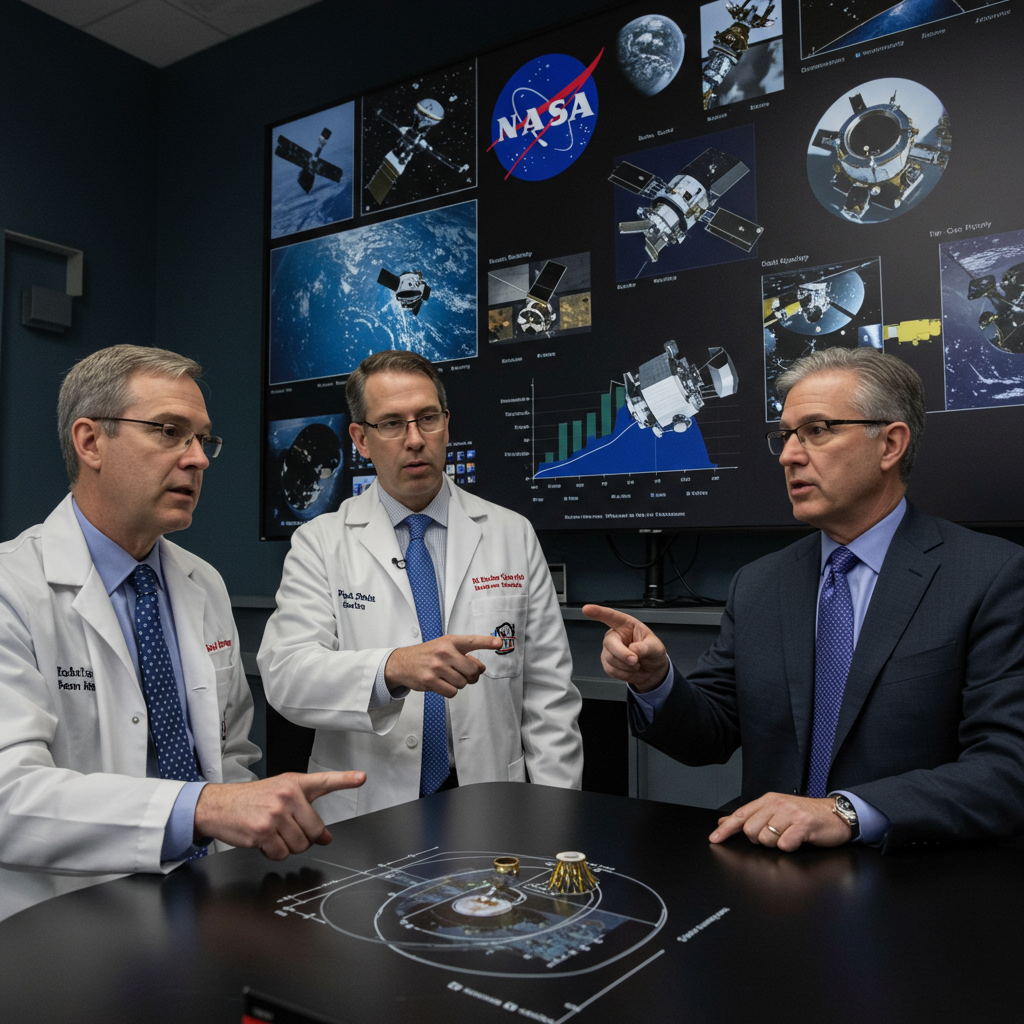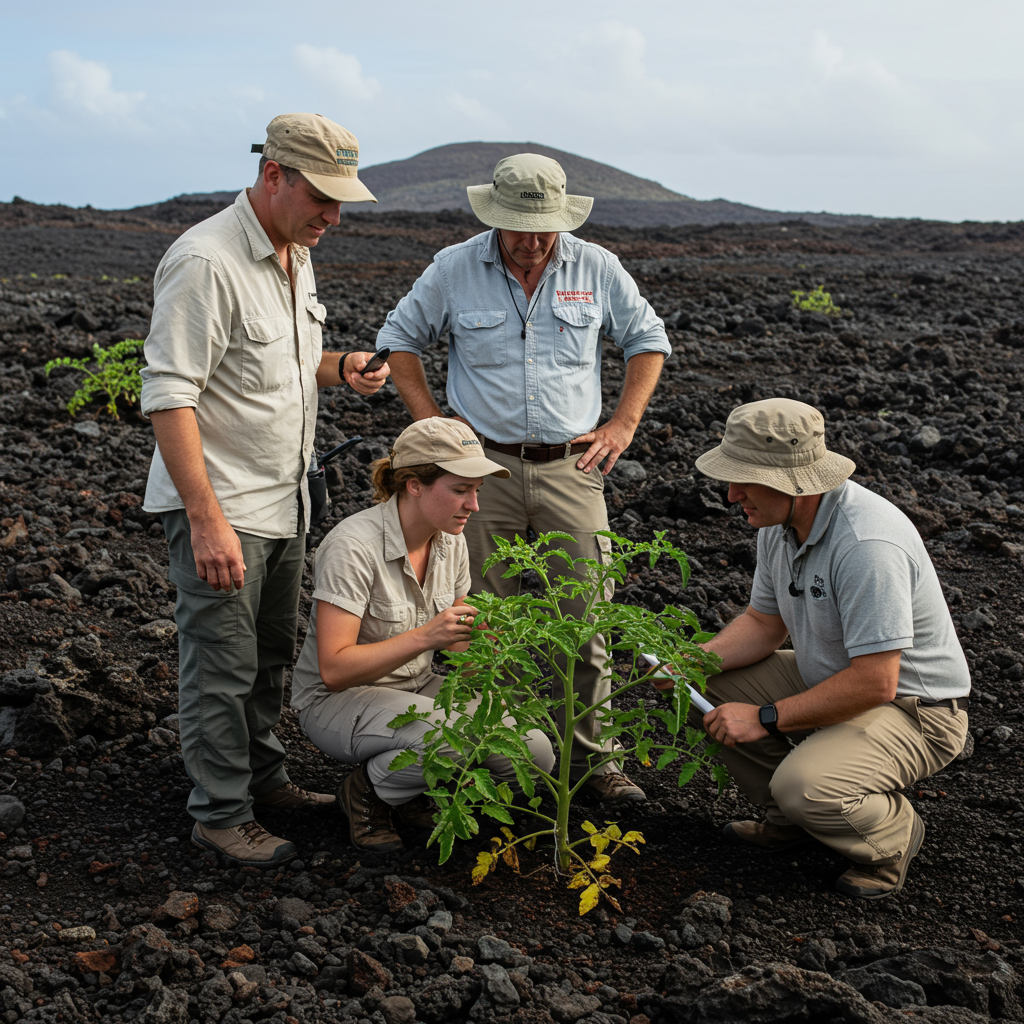Proposed budget reductions threaten to severely curtail NASA’s vital scientific exploration, jeopardizing missions critical for planetary defense, climate insights, and the search for life beyond Earth. A plan announced by the White House on May 30, 2025, outlines a drastic 47% cut to NASA’s science program. This proposal targets dozens of ongoing missions, some already launched and actively making groundbreaking discoveries, as well as planned future projects. The potential impact is profound, affecting everything from asteroid defense to our understanding of Venus and the search for water on the Moon. Experts behind these missions are speaking out, detailing the invaluable knowledge, technological advancements, and strategic advantages the United States stands to lose.
Understanding the full gravity of this situation requires hearing directly from the scientists who have dedicated their careers to these endeavors. These are world-class researchers with deep personal experience in the affected projects. Their insights reveal the specific stakes for each mission and the broader consequences for the future of space exploration and scientific progress.
Critical Missions Facing Cancellation
The proposed budget cuts cast a shadow over a diverse portfolio of missions across the solar system. Each represents a unique opportunity to expand humanity’s knowledge and capabilities. Scientists associated with several key missions have shared their perspectives on what is at risk if funding is withdrawn.
OSIRIS-APEX: Safeguarding Earth’s Future
The OSIRIS-APEX mission, an innovative follow-up utilizing the OSIRIS-REx spacecraft, is currently en route to encounter the potentially hazardous asteroid Apophis in 2029. Dr. Daniella DellaGiustina, the mission’s principal investigator at the University of Arizona, highlights its singular purpose: to observe how Earth’s gravity influences a near-Earth asteroid during a remarkably close flyby—an event that occurs only once every 7,500 years for an object of Apophis’s size. Losing this mission means forfeiting the sole opportunity to study this interaction in detail. This knowledge is crucial for understanding asteroid surface evolution, refining impact risk assessments, and developing effective planetary defense strategies. The mission exemplifies smart resource use by repurposing existing hardware. The 2029 Apophis flyby will be visible to billions globally, offering a rare chance to inspire the public and demonstrate proactive planetary defense, building upon efforts like NASA’s successful DART mission and ESA’s upcoming Hera follow-up, which will study DART’s impact effects in detail. Canceling OSIRIS-APEX would mean missing a critical chance to advance our ability to protect our planet.
MAVEN: Unlocking Mars’ Past and Predicting Earth’s Future
Orbiting Mars, the MAVEN spacecraft serves dual roles as a vital telecommunications relay for surface rovers and the premier observatory for studying atmospheric escape throughout the solar system. According to principal investigator Dr. Shannon Curry from the University of Colorado, MAVEN provides unique data on the history of the Martian atmosphere. This information is essential for understanding why Mars lost its ancient oceans and thicker air. Insights gained from Mars help scientists model the potential future of Earth’s own atmosphere and evaluate the atmospheric conditions on exoplanets, informing the search for life. MAVEN also offers crucial real-time data on solar storms and radiation at Mars, data vital for planning future human missions. Defunding MAVEN risks not only losing irreplaceable scientific data but also ceding leadership in Mars exploration to other nations. Approximately 350 people are involved in the mission team.
The Enigma of Venus: DAVINCI and VERITAS at Risk
Two planned missions targeting Earth’s closest neighbor, Venus, face particularly dire prospects. DAVINCI, an atmospheric descent probe, aims to provide the first comprehensive measurements of Venus’s atmospheric composition and chemistry all the way down to its scorching surface. It would also capture high-resolution images of ancient terrain. VERITAS, a planned orbiter, intends to create unprecedented global, high-resolution maps of Venus’s surface using radar and spectroscopy. Dr. Stephen Kane, on the DAVINCI science team, emphasizes that studying Venus, despite being Earth’s twin, is fundamental to understanding how terrestrial planets evolve. We still don’t fully grasp how Venus transformed from potentially Earth-like conditions with oceans into the hostile world we see today.
These Venus missions are critical for interpreting data from exoplanets. Many distant worlds may resemble modern Venus, and without detailed data from our own solar system neighbor, we risk misidentifying potentially habitable planets. Furthermore, developing technology to survive the harsh Venusian environment pushes boundaries in material science. Disturbingly, budget proposals for 2025 from both the U.S. House and Senate currently allocate zero funding for both the DAVINCI and VERITAS missions, effectively halting these crucial steps towards regaining U.S. leadership in Venus science. Canceling VERITAS means losing the chance to search for evidence of past surface water, assess current volcanic activity, study early-Earth-like processes, and understand why Venus lacks a magnetic field. VERITAS, often called a “once-in-a generation” mission, would utilize advanced techniques like machine learning for navigation.
Juno: Exploring Jupiter’s Secrets
NASA’s Juno spacecraft continues its extended mission orbiting Jupiter. Principal investigator Dr. Scott Bolton from Southwest Research Institute explains that while initially focused on Jupiter’s interior and atmosphere, Juno has expanded to explore the entire Jovian system, including its rings and inner moons like Thebe and Amalthea through close flybys. Defunding Juno would halt these unique investigations into previously unexplored regions. Beyond pure science, Juno provides critical data on how space systems withstand intense radiation – information vital for national security applications. Juno’s work also lays essential groundwork for future missions heading to Jupiter, such as NASA’s Europa Clipper and ESA’s JUICE, contributing significantly to our understanding of giant planets, solar system formation, and exoplanetary systems. Approximately 200 people work on the Juno mission.
VIPER: The Hunt for Lunar Resources
The VIPER lunar rover, designed to search for water ice in permanently shaded regions at the Moon’s South Pole, was already built when its mission was canceled in 2024. Although discussions about reviving it through partnerships have occurred, its future remains uncertain amidst budget negotiations. Dr. Clive Neal from the University of Notre Dame underscores VIPER’s importance as the only U.S. mobile lunar mission focused on resource prospecting. Without VIPER, the U.S. risks falling behind other nations in locating and understanding potential resources on the Moon that could sustain human exploration. VIPER provides essential “ground truth” to validate orbital data, making resource utilization concepts achievable rather than merely theoretical. VIPER represented several American “firsts” and held potential for driving job growth and new technologies here on Earth.
The Broader Landscape of Cuts
The proposed cuts extend beyond these profiled missions. Iconic missions like New Horizons, which provided the first close-up views of Pluto and is now exploring the Kuiper Belt, face potential shutdown while still operational. The ambitious Mars Sample Return (MSR) program, a multi-year international effort to bring Martian samples back to Earth, is also severely threatened. While the President’s budget request significantly reduced MSR funding, the House proposal for 2025 offered a substantial increase, though the Senate proposal matched the President’s low request, illustrating the unpredictable nature of the current budget fight.
Similarly, some congressional proposals target key operating space telescopes. The House proposal for 2025, for instance, zeroed out funding for both the Hubble Space Telescope and the Chandra X-ray Observatory, two foundational observatories that continue to produce critical data about the universe. In contrast, the Senate proposal and The Planetary Society recommendations advocated for increasing funding for these vital instruments. Shutting down these missions and observatories would mean losing access to unique data streams, resulting in job losses, stifled innovation, and a significant setback for U.S. leadership in space science and technology.
Why Public Funding is Essential for Space Science
The success of space exploration and fundamental scientific discovery has historically relied heavily on public investment. While the private sector excels in commercializing specific space services like launches, satellite operation, and Earth observation data, basic scientific inquiry operates differently. As highlighted by experts, science is fundamentally a process aimed at generating knowledge, not necessarily a product with immediate, predictable profitability. Fundamental research, by its nature, involves long timelines, high complexity, and uncertain outcomes – characteristics that don’t align with the private sector’s need for reliable short-term returns.
Following World War II, the U.S. government recognized that complex scientific progress was vital for national security and societal advancement. This led to the creation of institutions like the National Science Foundation and integrated basic research into agencies like NASA. While NASA contracts extensively with private companies to build mission components and utilize services like launch and cargo delivery (programs like CLPS for lunar deliveries are examples), the fundamental research questions, mission design, and data analysis for transformative discoveries remain largely a public responsibility. The domain of space science thrives on sustained, public funding that can support ambitious, long-term projects without needing immediate commercial justification. Cuts to this public investment cannot simply be offset by private companies.
Political Climate and Future Uncertainty
The fate of NASA’s science budget is currently entangled in complex political negotiations. As of late 2024, Congress had not passed required funding bills for Fiscal Year 2025, making a temporary spending extension (Continuing Resolution) likely. The duration of this extension and the final budget agreement will determine the immediate fate of many missions. Different proposals from the House and Senate show stark contrasts in priorities, with some missions being zeroed out in one proposal while supported in another.
Adding another layer of uncertainty is the potential for leadership changes. The proposed nomination of Jared Isaacman, a billionaire known for funding and participating in private spaceflights (including missions with SpaceX), as the next NASA Administrator signals a potential shift. While Isaacman is a fervent advocate for a thriving space economy and humanity becoming “spacefaring,” his background is primarily in private enterprise and space as a consumer/participant, not traditional science or government administration. He has expressed support for some science assets like Hubble and Chandra but has also been openly critical of costly legacy programs like SLS, arguing they detract from science funding. His potential leadership could bring new perspectives but also raises questions about conflicts of interest and the future emphasis placed on fundamental, publicly funded science versus commercial endeavors. The final budget decisions and leadership direction will profoundly shape NASA’s ability to continue its scientific mission.
What You Can Do
The scientific community and advocates are actively working to highlight the stakes involved in these budget decisions. Engaging with elected officials and expressing support for NASA’s science program remains a critical step for the public. Showing Congress and the White House that space science and exploration are valued by constituents can influence funding outcomes. Organizations like The Planetary Society are organizing campaigns to facilitate this advocacy. There is still time to speak up and potentially safeguard NASA science from what some are calling an “extinction-level event” for planned and ongoing missions.
Frequently Asked Questions
What specific NASA science missions are currently at risk due to proposed budget cuts?
Several key missions face potential defunding or cancellation. These include OSIRIS-APEX (studying asteroid Apophis), MAVEN (Mars atmospheric research), the planned Venus missions DAVINCI and VERITAS, Juno (exploring Jupiter), the VIPER lunar rover (seeking Moon water ice), New Horizons (exploring the outer solar system), the Mars Sample Return program, and even operating telescopes like Hubble and Chandra, depending on the final budget passed by Congress.
Why is space science primarily funded by government agencies like NASA, rather than private companies?
Space science involves fundamental research aimed at understanding the universe. This process is complex, has long timelines, and the outcomes often lack immediate commercial applications or predictable profits. Private companies are driven by market demand and returns. Historically, governments, like the U.S. post-WWII, have taken on funding basic research because it provides broad societal benefits, national security advantages, and inspires future generations, which aligns better with public sector goals than private enterprise interests.
How might proposed changes in NASA leadership or future budgets impact the missions discussed?
Budget proposals from the U.S. House and Senate for 2025 show differing priorities, with some missions like DAVINCI and VERITAS facing zero funding in both proposals, while others like Mars Sample Return, Hubble, and Chandra face cuts or support depending on which proposal is considered. A potential new NASA Administrator from a private space background might prioritize commercial partnerships or different types of missions compared to traditional science, adding another layer of uncertainty about the long-term strategic direction and funding levels for fundamental science programs.
Conclusion
The proposed deep cuts to NASA’s science budget represent a critical juncture for space exploration. The scientists behind missions like OSIRIS-APEX, MAVEN, DAVINCI, VERITAS, Juno, and VIPER have articulated clearly what is at stake: irreplaceable scientific data, lost opportunities for planetary defense and resource utilization, setbacks in understanding our own planet’s climate and the potential for life elsewhere, and a decline in U.S. leadership in a crucial global arena. While private industry plays an increasing role in space services, the foundational, long-term discovery driven by public funding is essential and cannot be easily replaced. The current budget negotiations and potential future leadership changes add complexity to an already uncertain situation. Ensuring the future of NASA’s vital scientific endeavors requires recognizing the immense value they provide to society and advocating for continued, robust public investment in unlocking the secrets of the cosmos.




